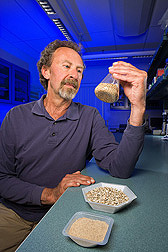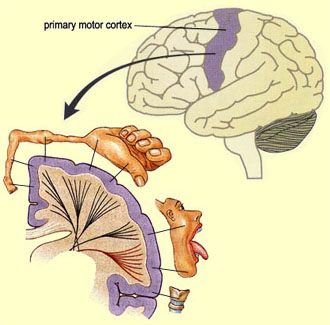by Allison Younkins
How one fungus is changing the way we battle pests
The fungus Muscodor albus rarely gets to play the hero-but that could all be changing according to USDA Agricultural Research Service (ARS) scientists. In February 2010, results from an ARS study regarding the effects of this fungus on a common wheat disease were published in The Canadian Journal of Microbiology. Throughout multiple experiments in recent years, researchers have found that Muscodor albus was effective in eliminating common insect and fungus pests that attack wheat, apples, and grapes.
The super powers of Muscodor albus
This natural fungus could be the answer to eradicating numerous agricultural pests. But how does this fungus do it? Instead of physical strength, or even the ability to fly like other superheroes, this fungus emits Volatile Organic Compounds (VOCs) that are known to naturally kill pests and other fungi. The most recent Muscodor experiment tested the fungus’ ability to eliminate another fungus T. tritici, which reduces wheat yield and lowers crop quality. In laboratory experiments, the VOCs from Muscador killed 100% of the T. tritici spores and prevented the spread of the fungus. This is just one of numerous experiments regarding Muscodor albus-results show that this fungus is also effective against agricultural villains like potato tuber moths, apple codling moths, and the fungus Botrytis cinerea.

This biocontrol may be the answer for growers and consumers: how fungus is actually better for you
Fungi such as T. tritici are currently controlled in the field by chemical pesticides, which are effective-for now. Researchers are interested in biocontrol solutions because it is possible that these agricultural scoundrels will become resistant to the chemical pesticides. This could expose growers to tremendous financial losses because they have “become reliant” on chemical solutions, according to plant pathologist Blair J. Goates, with the ARS Small Grains and Potato Germplasm Research Unit. And while chemical effects on humans and the environment are a constant concern with chemical pesticides, the use of Muscodor albus does not harm humans or animals and leaves little residue on treated plants. This biocontrol could also benefit organic growers, because currently there is no available natural treatment for these extremely common pests. While Muscodor albus doesn’t fight crime, it may progress as a useful biocontrol method for a different kind of villain. Don’t expect this fungus to wear or cape, or even to star in a comic book, but you can expect Muscodor albus to continue making headlines as a potentially powerful biocontrol agent.
Want to learn more? Check out the resources I used for this blog:










